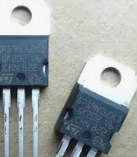In exploring the ocean of modern electronics, we often encounter examples that may seem mundane but hide complex principles. Recently, I encountered such a case on a well-known electronics forum. A netizen shared his confusion: he built a basic triode drive circuit designed to reverse the signal, but the result was not as expected. Although this problem seems simple on the surface, it actually contains profound electronic principles.
Problem description and community interaction:
The circuit described by this netizen is very basic and uses a triode to drive it. The original intention is to achieve the reverse direction of the signal. However, he found that the output waveform did not change as expected, which caused his confusion. The core component of the circuit, the triode, has a conduction frequency of up to 100MHz, while the pulse frequency in his circuit is only about 1MHz. On forums, his confusion sparked widespread discussion and speculation. Some people doubted the authenticity of the triode, others suggested adjusting the resistor value, and others speculated that the switching speed might be insufficient.

Solution proposal and verification:
In this discussion, an experienced netizen (ID: lw2012) proposed an inspiring solution: connect a 100nF capacitor in parallel with R1. Surprisingly, when the poster implemented this suggestion, the problem was effectively solved. This case not only demonstrates the mutual help among electronics enthusiasts, but also reveals the practical application value of the key concept of "acceleration capacitor".
In-depth analysis: charge storage effect and the role of accelerating capacitor:
Next, let us analyze this case in detail. Between the base and emitter of the triode, there is an internal capacitance due to the charge storage effect. This capacitor and the base resistor Rb together form an RC circuit, and its time constant affects the turn-on and turn-off speed of the transistor, that is, it affects the switching speed. The addition of accelerating capacitors optimizes this process.
The specific functions of accelerating capacitors:
When the control pulse is at a low level, the circuit reaches a steady state and the transistor is turned off. At this time, the voltage across the capacitor is zero. When the control pulse high level arrives, since the capacitor voltage cannot mutate, the capacitor needs to continue to maintain zero voltage. At this time, the base voltage of the transistor rises rapidly, prompting the transistor to turn on quickly; then the capacitor is charged to the pulse level voltage, Enter steady state.
Circuit dynamic analysis:
Analyzing this process further, we can see that capacitors play a key role in the circuit. When the input signal voltage jumps from 0V to high level, the voltage across the capacitor remains unchanged, causing the voltage at the base of VT1 to appear a peak pulse, causing the base current of VT1 to increase rapidly, thus accelerating the transistor from the cut-off state into the saturation state. conversion. During the process of maintaining conduction, the charging of the capacitor ends quickly, maintaining the saturated conduction state of the transistor. When the input signal voltage jumps from high level to 0V, the voltage polarity on the capacitor causes the base voltage of VT1 to become negative, which accelerates the conversion speed of the transistor from the saturation state to the cut-off state.
in conclusion:
Through this case, we not only solved a specific circuit problem, but also gained an in-depth understanding of the important role of charge storage effects and accelerating capacitors in modern electronics. This is not only a successful practice in electronics, but also an example of the spirit of community cooperation. By sharing knowledge and experience, we are able to gain a deeper understanding of how electronic components work and further advance technology.
